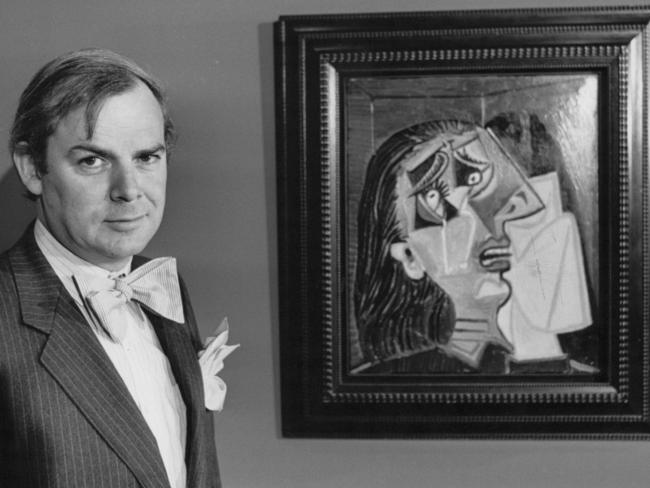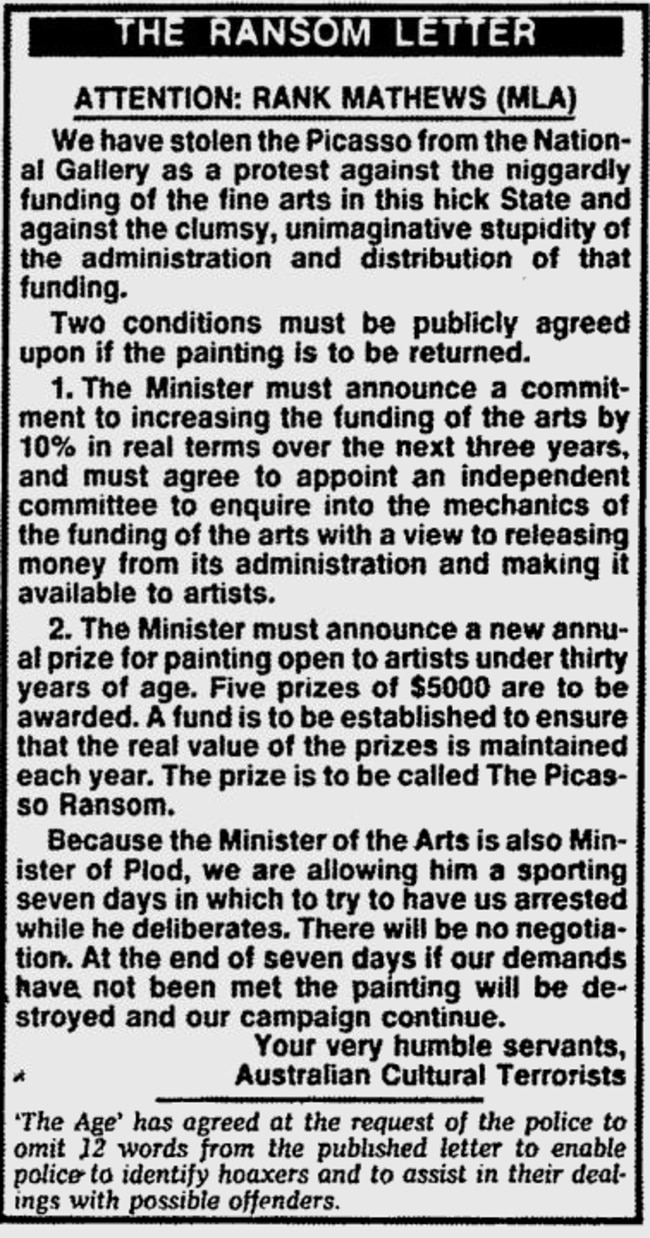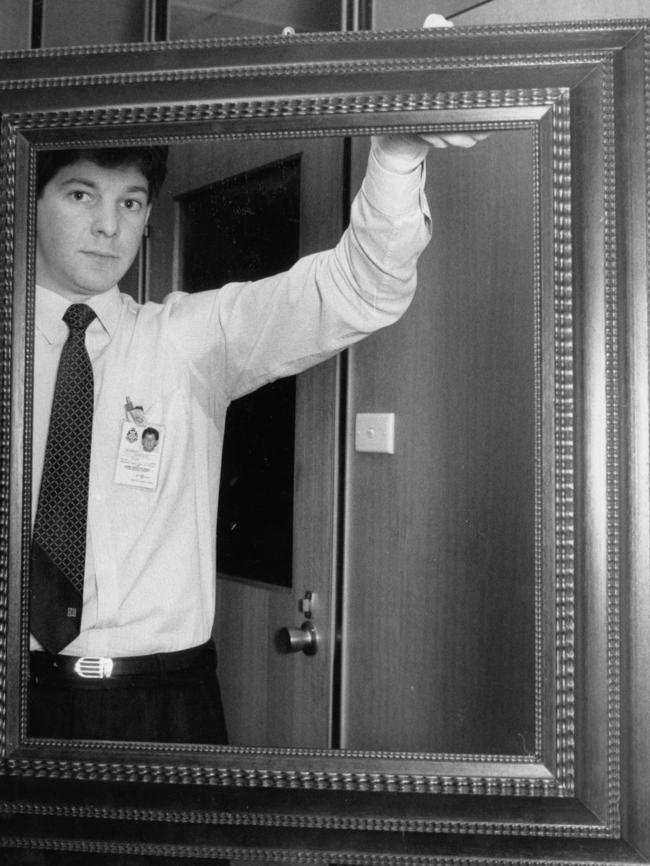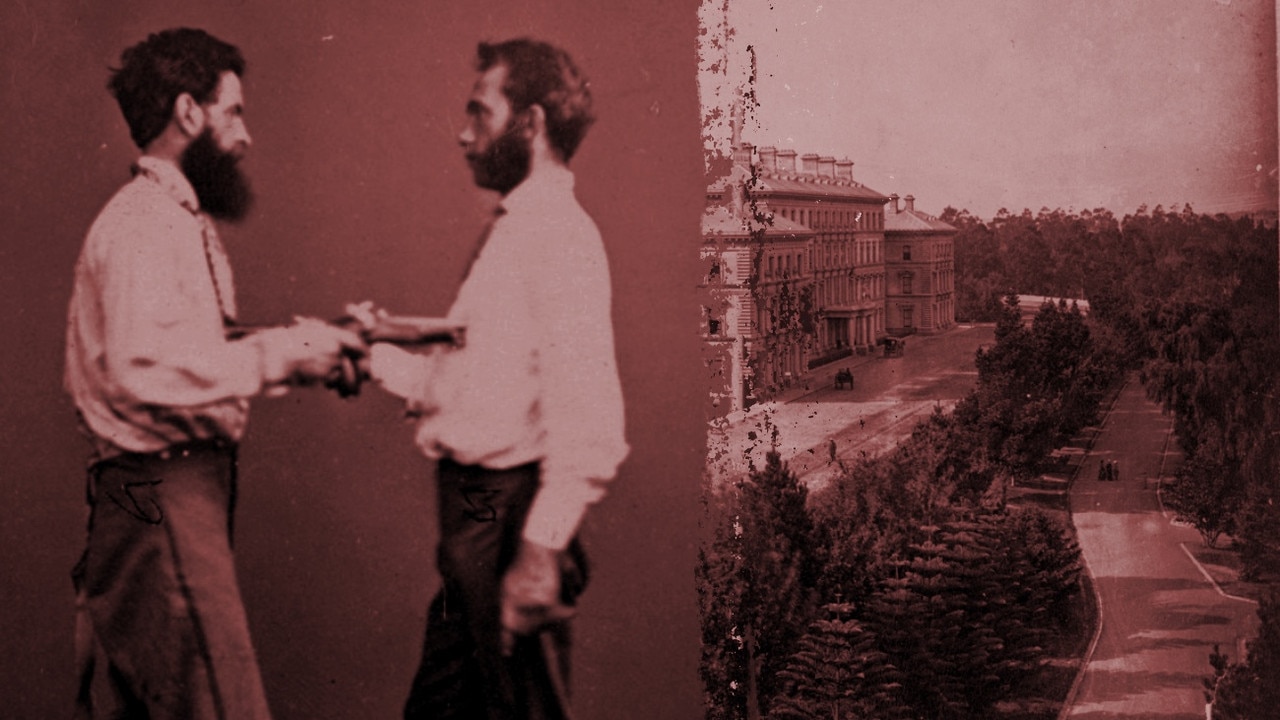Picasso Weeping Woman painting theft: The great art heist that shocked Melbourne
IT was one of the most expensive artworks ever purchased by an Australian gallery — and its theft became one of our most baffling crimes. Who stole Picasso’s Weeping Woman?
Melbourne
Don't miss out on the headlines from Melbourne . Followed categories will be added to My News.
IN December 1985, the National Gallery of Victoria became the proud owners of the Picasso masterpiece Weeping Woman.
It was the most expensive artwork acquired by an Australian art gallery and cost Victorian taxpayers $1.6 million.
Eight months later it was gone.

When the painting was first acquired in 1985, gallery director Patrick McCaughey said the painting would “haunt Melbourne for the next 100 years”.
He wasn’t wrong. The biggest art heist in Victoria’s history has never been solved and the culprit (or culprits) never caught.
On Monday, August 4, 1986 The Age newspaper received a letter addressed to then-arts minister Race Mathews that read: “We have stolen the Picasso from the National Gallery as a protest against the niggardly funding of the fine arts in this hick State.”

The paper phoned the gallery and indeed the most expensive painting in the nation was gone.
“Confronting the bare wall and the fake label, I was aghast. I excused myself from the committee meeting and began a search of the gallery, desperately hoping that it was a prank and that the painting had been hidden in the building,” McCaughey said in his book The Bright Shapes and the True Names.


A statement from the gallery said the Picasso was removed from the wall with a special security screwdriver but McCaughey dismissed the rumours that the theft was an inside job.
A frantic all-night search failed to find anything more than the empty frame of the painting near where it was removed from a gallery wall.
It was believed there is still a faint chance that the painting could be hidden in the building and police spent days scouring every part of the gallery — in vents, behind other paintings, anywhere that it could possibly be hidden.

Victoria’s crack Major Crime Squad was called in to handle the investigation.
The next day the government made it clear it would not negotiate with the thieves and said a ransom would not be paid.

On August 11 the hunt for the missing painting took an ominous turn when the group claiming to have stolen it sent a letter and a burnt match, which read: “thank you for your support. Phase two begins shortly.”
Then there was silence from the thieves for almost two weeks and fingers pointed and the media developed theories about who stole the painting.
There was a consensus that it was an inside job — someone who knew the intricate workings of the gallery and its security arrangements.
Then on Tuesday August 19 The Age received a call saying the painting was in locker 227 at Spencer Street Station.
Journalists and police bounded for the station and found the a package in the locker the exact dimensions of the Weeping Woman and neatly tied in soft brown paper.
“The gallery’s chief conservator, who was now on hand, whipped the package into a waiting police car with journalists running after us,” McCaughey said.
“We were whisked up to the forensic laboratory where the painting was unpacked and Weeping Woman emerged unharmed.”
Race Mathews was confident that the culprits would be found.
“I would find it extraordinary if nothing were to surface from a world which is characterised so much by the exchange of gossip and strongly felt rivalries,” he said after the painting was recovered.
To this day, no one has ever been charged with the theft of the Weeping Woman.


